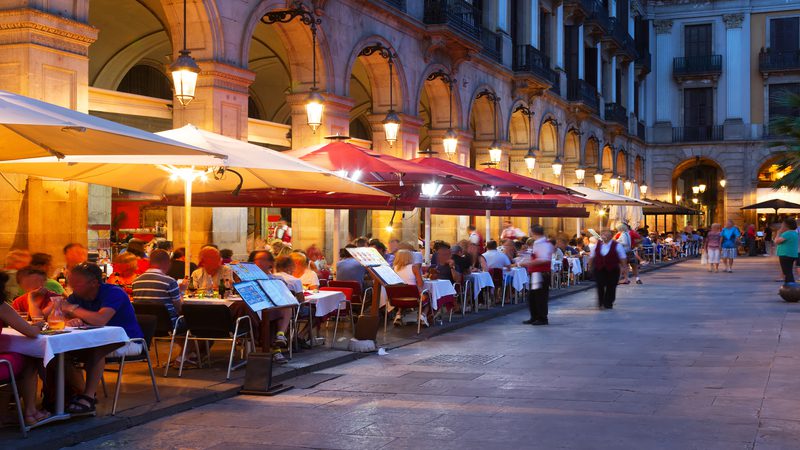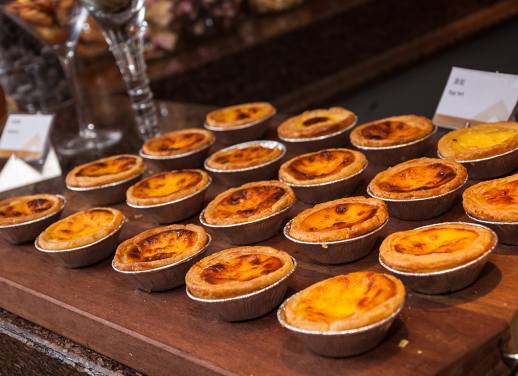With its long history as a center of trade and its privileged location between the Mediterranean Sea and miles of fertile farmland, Barcelona has long been known for having some of the world’s best food. What is less known is that Barcelona is Spain’s most cosmopolitan city, with a thriving community of North Africans, Latin Americans, Chinese and many other nationalities who have made the town their home since the 1950s.
While no visit to Barna (not Barça, which is the nickname for the soccer team only!) is complete without a trip to one of the city’s traditional restaurants, travelers should also check out the amazing selection of international food on offer.
So, check out our guide to the best of Barcelona’s Spanish and international cuisine:
FOR SOME SPANISH FLAVORS…
El Xampanyet
https://www.instagram.com/p/BUmJ4JcBYJT/?taken-at=621129705
A neighborhood favorite since it first opened in 1929, El Xampanyet is one of the best loved tapas bars in the city. It’s by no means a fine dining affair – if you arrive when it’s busy, you may have to squeeze in by the bar – but its classic, unpretentious menu is not to be missed.
Of particular interest are its anchovies, which are widely regarded as some of the freshest in town. And best of all, it’s just down the road from the Picasso Museum.
Can Culleretes
The oldest restaurant in Barcelona, Can Culleretes first opened to the public when George Washington was still in the White House. Fittingly, the traditional menu feels like it comes from another era. Specialties include wild boar, partridge and suckling pig, although it also serves simpler dishes like cannelloni and sausage with white beans.
The interior is a pleasant blast from the past, with yellow and blue tiled walls, paintings of bygone days and signed photographs of the many celebrities who have dined there. And with set menus starting from less than 25 Euros a head, it’s a great way to sample timeless Catalan fare without breaking the bank.
LOVE SPANISH FOOD? YOU’LL LOVE THIS 10-DAY FOOD TOUR OF NORTHERN SPAIN
Quimet & Quimet
https://www.instagram.com/p/BUZd6FhlGtC/?taken-at=229306907
Located in the friendly barrio of Poble Sec, a district that guide books have been calling ‘up-and-coming’ for over 20 years, this tiny tapas bar is one of the most renowned in the city. The complete lack of seating and endless stream of rowdy locals keep many tourists away, but those who are willing to squeeze their way inside are in for a real treat.
Of particular interest are the salmon and honey montaditos (bite-size tapas on bread); other dishes include artichokes with peppers, mushroom with truffle and scallops with tomato and caviar. Whatever you try, it’s all delicious.
Can Vilaró
There is no phrase more overused in modern gastronomy than homemade. But at Can Vilaró, a no-frills bar in the trendy neighborhood of Sant Antoni, the description is warranted. This unpretentious tavern has been cooking up Spanish family favorites since it first opened in 1967, with fresh ingredients sourced from the nearby market.
The bodega is known for its revolving menu of seasonal specialties, which changes depending on the time of year and the availability of local produce. Those of a courageous disposition should try the liver and brains in batter or the sheep’s feet with tripe and potatoes. And for the rest of us, there’s always albondingas (Spanish meatballs).
SUBSCRIBE TO OUR NEWSLETTER FOR TRAVEL INSPO, GIVEAWAYS, COMPETITIONS & MORE
O Meu Lar
https://www.instagram.com/p/BKqPvCggOQI/?taken-at=22165218
A barbecue lover’s paradise, O Meu Lar has been grilling some of the city’s best meat for nearly 30 years. After arriving from Spain’s wet and wild Atlantic coast in the 1970’s, chef Antonio has dedicated his life to making this homely, rustic establishment one of the finest Galician restaurants in the city.
Their specialty is grilled Galician beef, lamb ribs and suckling pig, although the grilled fish, sautéed clams and pork stew are also excellent.
FOR SOME INTERNATIONAL FLAVORS…
Chen Ji
With a population of over 15,000, Chinese people are some of the most noticeable immigrants to Barcelona. Fort Pienc, the city’s unofficial Chinatown, is the best place to sample authentic Eastern food. Perhaps the best known among locals is Chen Ji, a few minutes’ walk from Arc de Triomf.
Serving up heaping portions of hearty fare at rock bottom prices, the restaurant is popular with students who load up on its overflowing plates of noodles and rice before (or perhaps during) class. The restaurant’s everyday favorites, such as Peking Duck and Gong Bao Chicken, are a delight, although more adventurous types might like to try jellyfish or duck tongues.
CHECK OUT OUR SISTER COMPANY URBAN ADVENTURE’S DAY TOURS IN BARCELONA
Ramen-ya Hiro
https://www.instagram.com/p/BUNJIPnhBLT/?taken-at=236594595
Unlike the Chinese, the Japanese do not make up a large proportion of Barcelona’s immigrant population. One of the city’s few Japanese-run restaurants is Ramen-ya Hiro, located in the fashionable district of Gracia. Unlike Chen Ji’s never ending menu, this authentic restaurant focuses on just one thing – making the best noodle broth in the city. And it does not disappoint.
There are three types of soup available, miso based, soy based and tonkotsu (pork bone based). Whichever you choose, the broth imparts a rich flavor that has customers (quite literally, due to its tiny size and no reservations policy) lining up around the block.
Café Tolstoi
Elegantly decorated in a style reminiscent of Nineteenth Century Saint Petersburg, Café Tolstoi is the place to go for your fix of herring salad, borsch and caviar. The establishment also functions as a high class tearoom, where customers can sample a variety of different drinks, including black tea with chocolate, cocoa and pomegranate seeds or green tea with jasmine.
As you might expect, the cellar also holds a wide variety of different vodkas, ranging from a €2.50 shot of Moskovskaya to a €115 bottle of Beluga Noble.
A GUIDE TO LA BOQUERIA, BARCELONA’S MOST FAMOUS MARKET
Mi Rincon
https://www.instagram.com/p/5yC7GrqFi4/?taken-at=1468240856535876
Translating as My Corner, this highly regarded restaurant serves as a home away from home for Barna’s large community of Colombian expatriates. Situated just four blocks from the world famous Sagrada Familia, Mi Rincon is another great way to get a taste of the exotic. Its chief specialty is Colombia’s unofficial national dish, Bandeja Paisa. This belly-busting delight consists of beans, white rice, chorizo, fried egg, plantain, avocado, ground meat, pork rind and an arepa, a type of Colombian corn bread.
For those who do not feel the need to consume a day’s worth of food in a single sitting, smaller dishes, such as coconut seafood rice and ceviche will give you all the energy you need to see Gaudí’s unfinished masterpiece without piling on the pounds.
OFF TO MADRID? HERE’S 6 DELICIOUS DISHES TO TRY IN SPAIN’S CAPITAL
Addis Abeba
https://www.instagram.com/p/BOGHfHDD973/?taken-at=1696870
This cozy eatery in the heart of Sants neighborhood is a true hidden gem. One of just two Ethiopian restaurants in town, Addis Abeba specializes in colorful, authentic dishes at affordable prices. Its dorowot, a type of chicken stew with egg and onion jam, is the establishment’s mostly widely-known dish.
However, its meat-free plates, such as spiced pumpkin soup and stir fried chick peas with leeks and ginger are perfect for vegetarians, or those still digesting a bandeja paisa!
Can’t get enough of that delicious Spanish cuisine? Our small group adventures in Spain are just what you need.
(Hero image c/o Intrepid Travel, all other images c/o Instagram.)






